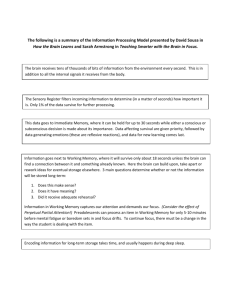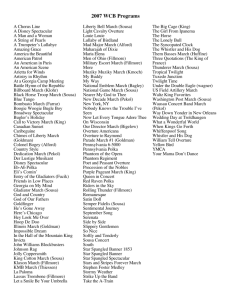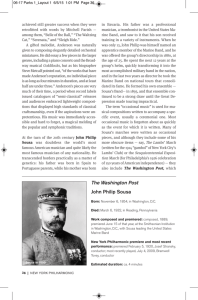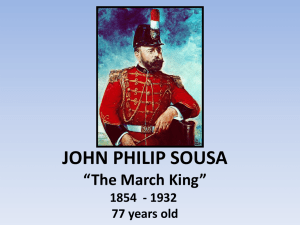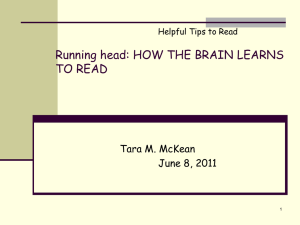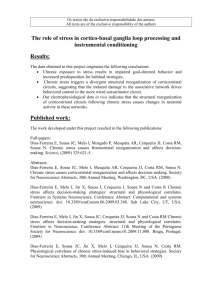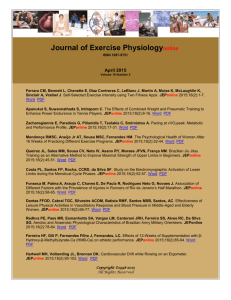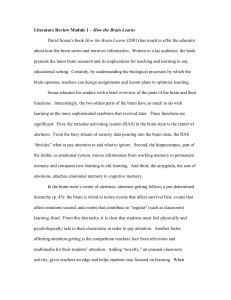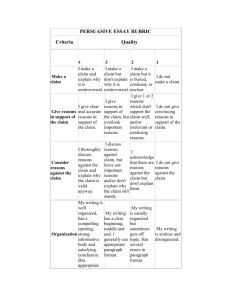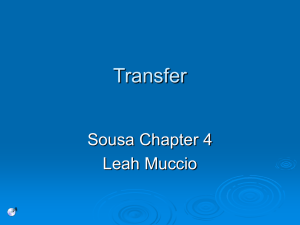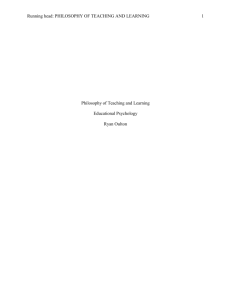How Should Two Easily Confused Words Be Taught In An ESL
advertisement
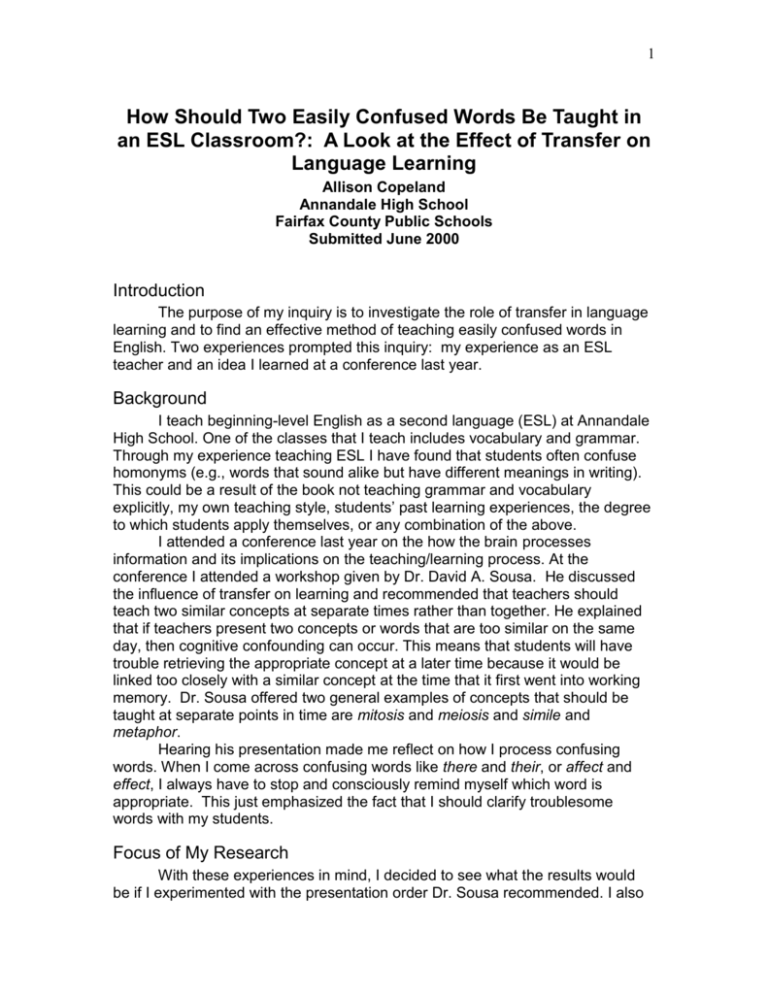
1 How Should Two Easily Confused Words Be Taught in an ESL Classroom?: A Look at the Effect of Transfer on Language Learning Allison Copeland Annandale High School Fairfax County Public Schools Submitted June 2000 Introduction The purpose of my inquiry is to investigate the role of transfer in language learning and to find an effective method of teaching easily confused words in English. Two experiences prompted this inquiry: my experience as an ESL teacher and an idea I learned at a conference last year. Background I teach beginning-level English as a second language (ESL) at Annandale High School. One of the classes that I teach includes vocabulary and grammar. Through my experience teaching ESL I have found that students often confuse homonyms (e.g., words that sound alike but have different meanings in writing). This could be a result of the book not teaching grammar and vocabulary explicitly, my own teaching style, students’ past learning experiences, the degree to which students apply themselves, or any combination of the above. I attended a conference last year on the how the brain processes information and its implications on the teaching/learning process. At the conference I attended a workshop given by Dr. David A. Sousa. He discussed the influence of transfer on learning and recommended that teachers should teach two similar concepts at separate times rather than together. He explained that if teachers present two concepts or words that are too similar on the same day, then cognitive confounding can occur. This means that students will have trouble retrieving the appropriate concept at a later time because it would be linked too closely with a similar concept at the time that it first went into working memory. Dr. Sousa offered two general examples of concepts that should be taught at separate points in time are mitosis and meiosis and simile and metaphor. Hearing his presentation made me reflect on how I process confusing words. When I come across confusing words like there and their, or affect and effect, I always have to stop and consciously remind myself which word is appropriate. This just emphasized the fact that I should clarify troublesome words with my students. Focus of My Research With these experiences in mind, I decided to see what the results would be if I experimented with the presentation order Dr. Sousa recommended. I also 2 wanted my students to know the differences between confusing words and be able to use them correctly in writing. Furthermore, I wanted to investigate what Dr. Sousa had written about on the subject of transfer and learning. I found Dr. Sousa’s book, How the Brain Learns: A Teacher’s Guide to read more on the topic. In his book, he writes about the importance of transfer in learning. He defines transfer as the influence that past learning has on new learning and then, the degree to which the new learning will be useful in the learner’s future. When a learner acquires new knowledge or skills, it first goes into the working memory. While this happens, long-term memory looks for previous learning that is similar or associated to the newly learned material. If the long-term memory finds something related, this linkage is moved into the working memory and an association is made. How does this relate to learning confusing words? Sousa writes that teachers have an important role in that they are able to eliminate negative transfer or interference in student learning. Negative transfer can be caused by teaching two concepts that are very similar at the same time. Similarity can cause confusion among concepts, such as fiction and nonfiction or longitude and latitude. “The more specific the cue the working memory attaches to a new learning, the easier it is for long-term memory to identify being sought,” explains Sousa. Even more important, there is an interesting phenomenon regarding longterm storage and retrieval: we file by similarity; we retrieve by difference. This is why it is important to focus on one concept at one point in time when practicing it for the first time so that there is no confusion when it goes into working memory, and later long-term storage. Method I taught two pairs of easily confused homonyms using two different methods with the same class. I taught to and too on the same day; the method Dr. Sousa warned against. They were practiced and rehearsed on the same day. However, their differences were emphasized. This means that connections were made between the two when stored in their network files. Plus, the learners probably attached similar retrieval cues to both words, thus causing confusion when retrieved in another situation. Then I taught there and their using the method Sousa recommended, separated in time. Students learned and practiced these words on separate days. They were later compared when it was time to review for the quiz, yet their differences were emphasized. Pre-tests and post-tests were given for both sets of words, and I tried to standardize my teaching method throughout the study, with the only variable being the time factor. However, there were other variables involved, such as student application. I gave the students an evaluation with questions that asked them to describe which words were more confusing and how they preferred to learn these words. When I taught both sets of confusing words, I gave the students key words to link with the concepts for easier retrieval. This is what Sousa calls critical attributes. These are characteristics that make one concept unique from others in a learner’s mind. When a student links a key word to a concept, this helps him or 3 her retrieve it instead of a similar concept at a later time. I even find myself recalling critical attributes to words such as further and farther – further is degree, farther is distance. Findings Student post-tests showed that learning occurred for both sets of words, despite the method in which they were taught. The number of tests with perfect scores increased with both methods of teaching. There was a 42% increase in perfect scores (to and too) with the method not recommended by Sousa. There was a 50% increase in perfect scores (there and their) with the method recommended by Sousa – teaching similar concepts separated in time. Twelve out of sixteen students identified there and their as more confusing. However, there were more perfect scores on that test. When asked which method students preferred to learn confusing words, sixteen students responded. Ten said they preferred to learn them on separate days and six preferred to learn them on the same day. I gave an unannounced test a few weeks later to see the long-term effects of storage and retrieval. Students had more trouble with there/their, the set of words that I taught on different days. Reflection Based on my findings it seems that both methods of teaching work. However, I still prefer to teach confusing concepts separated in time. Yet during this study, I had trouble with the fact that I was teaching words or grammar points in isolation. I reconciled this by thinking of my own experiences with English. When I write I have to stop and remember which word is appropriate, or would be semantically correct. Luckily when I was a student, I learned critical attributes for many confusing words or concepts. This just proves that students need them, too. On an evaluation, one student even recalled the key words that had helped her retrieve the appropriate words – “Too = also…” It is important to isolate vocabulary or grammar at times, yet only when needed. However, I will continue to integrate grammar and vocabulary learning with more meaningful contexts. Some surprising insights came about as well—such as the issue of students’ false sense of confidence. The students who remarked about how easy it was to tell homonyms apart were the same ones that had the most trouble in their writing and on the tests. These particular students have confidence because they are able to use the words in speech, yet they confuse them in writing. They seem to be more careless than others. Apart from the results, this inquiry provided to be useful in many ways. I investigated memory and transfer and how to teach easily confused concepts, I reflected on how I teach language, I sharpened my ability to teach discrete language concepts (providing explanations, writing assessments, and thinking of ways for students to practice and rehearse), students learned and hopefully will have more success with language in the future, and students were able to reflect on their learning.
